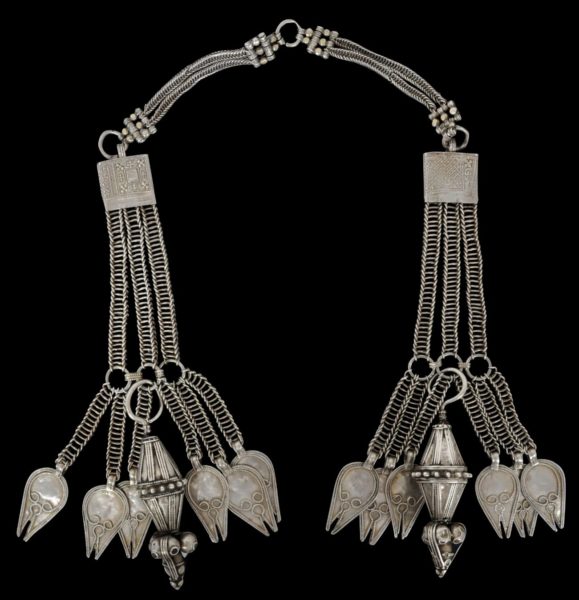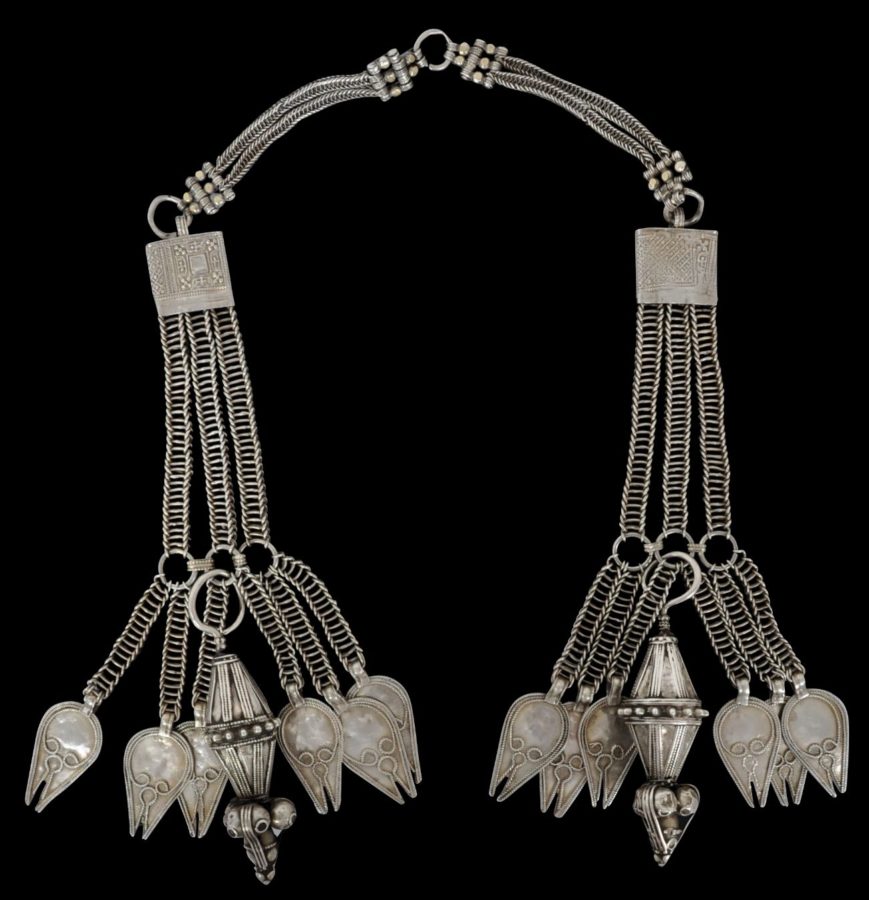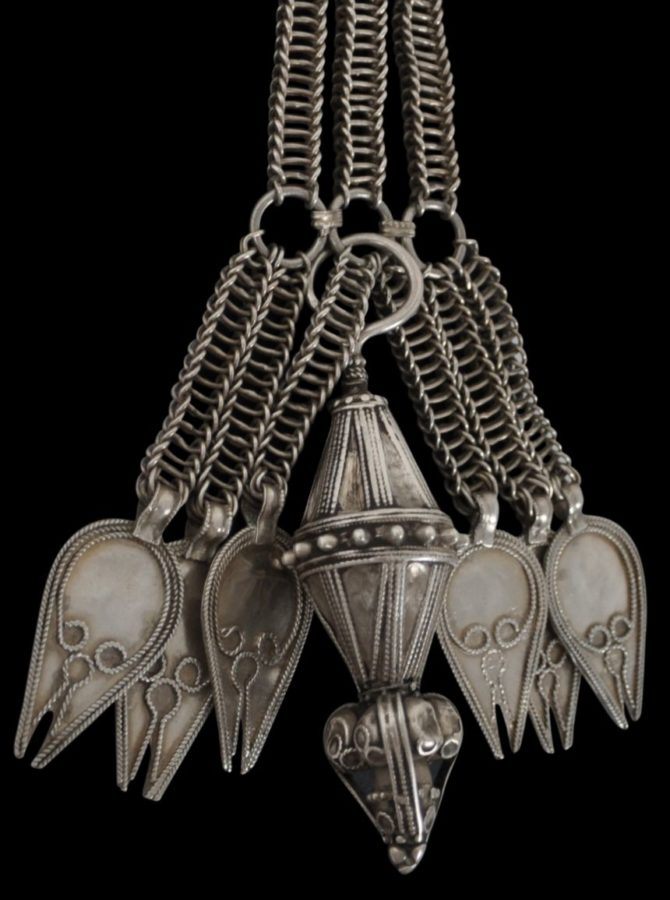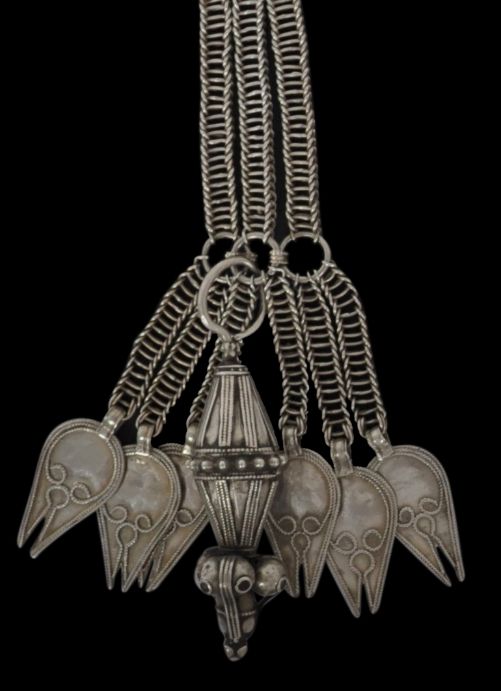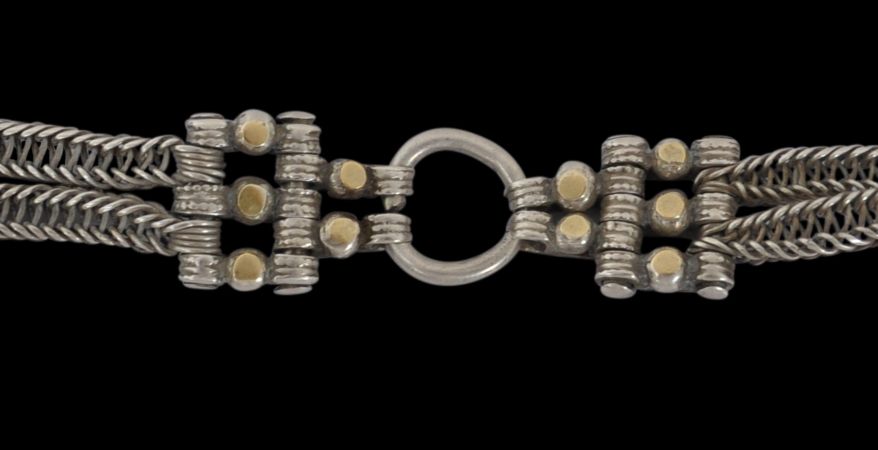This headdress comprises bands of multiple silver chains and silver rings that is made to fit over the top of the head, so that the side ornaments hang around the ears as temporal ornaments. The central bands features attractive hinged sections that include silver spheres that have been overlaid with gold.
Each band terminates with multiple chains each of which terminates in a large tear-shaped silver plaque that is decorated with applied twisted silver wire work.
Each is further decorated with a pendant, bi-conical silver ear ornament. The form of each is of a double cone with a pendant array of plump silver berries held together by three ribbed bands coated in gold. Beneath this is a triangular form comprising silver granulation work, a form that is commonly described as being based on the mulberry.
The mid-section of each ear ornament is decorated with a row of silver spikes – an allusion to the thorns commonly encountered in the Omani desert.
The allusion to berries and leaves in this pair of ear ornaments is suggestive of fertility, prosperity and abundance – appropriate allusions for Bedouin women to wear.
See Rajab (2004, p. 23) and Geoffrey-Schneiter & Crick (2016, p. 39) for related pairs.
The headdress is pleasing and decorative. The set has a fine patina from use, handling and age. There is minor but typical denting to some of the ‘berries’ that decorate the lower sections of the ear pendants.
References
Geoffrey-Schneiter, B., & M. Crick, Bijoux D’Orients Lointains: Au Fil de L’Or au Fil de L’Eau, Foundation Baur, Musee des Artes D’Extreme-Orient/5 Continents,
2016.
Rajab, J.S., Silver Jewellery of Oman, Tareq Rajab Museum, 1998.


